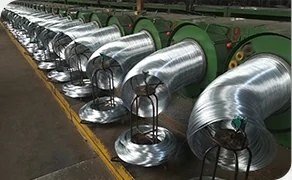 TEL:
+86-13102802206
TEL:
+86-13102802206
 Email:
fencenetting@china.com
Email:
fencenetting@china.com
 Language
Language
 TEL:
+86-13102802206
TEL:
+86-13102802206
 Email:
fencenetting@china.com
Email:
fencenetting@china.com
 Language
Language


The Versatility and Strength of Stainless Steel 201 and 304 Cables
In the realm of industrial applications, cables play a crucial role in ensuring seamless operations across various sectors. Among the various types of cables available, stainless steel cables, particularly those made from stainless steel grades 201 and 304, have garnered significant attention for their strength, durability, and versatility. In this article, we will explore the characteristics, applications, and benefits of stainless steel 201 and 304 cables, highlighting why they are preferred choices in diverse scenarios.
Understanding Stainless Steel Grades
To appreciate the advantages of stainless steel cables, it is essential to understand what the grade numbers signify. Stainless steel is an alloy composed primarily of iron, along with chromium and nickel, which provide corrosion resistance and structural integrity. The two common grades used for cable production, 201 and 304, have distinct properties.
Grade 201 Stainless Steel Grade 201 contains less nickel than grade 304, making it more cost-effective. It is often used in environments where the risk of corrosion is moderate. Its mechanical properties—that is, its tensile strength and resistance to wear—make it suitable for many applications. However, it is worth noting that 201 has a lower corrosion resistance compared to 304, particularly in coastal areas or environments with high humidity.
Grade 304 Stainless Steel Grade 304 is one of the most widely used stainless steel grades. It includes a higher percentage of nickel, which significantly enhances its corrosion resistance. This makes 304 cables ideal for harsher environments, including those exposed to saltwater or acidic conditions. The strength and durability of 304 stainless steel cables make them a standard choice in many high-stakes applications.
Applications of Stainless Steel Cables
Stainless steel cables, particularly those made from grades 201 and 304, are utilized across a myriad of industries. Their strength and resistance to environmental factors contribute to their popularity. Here are some common applications
1. Construction and Architecture Stainless steel cables are often used in architectural design, including suspension bridges, cable-stayed structures, and railing systems. Their ability to withstand tension and maintain structural integrity while blending seamlessly with modern designs makes them an excellent choice for architects and engineers.
2. Marine Industry For maritime applications, grade 304 stainless steel cables are favored due to their exceptional resistance to corrosion in saltwater environments. These cables are used in rigging, mooring lines, and various marine accessories, ensuring safety and reliability in harsh conditions.
3. Mining and Forestry Stainless steel cables are employed in the mining and forestry industries to hoist heavy loads, secure rigs, and transport materials. Their strength-to-weight ratio is essential for handling the demanding tasks associated with these rugged environments.

4. Automotive and Aerospace In the automotive and aerospace industries, stainless steel cables are used for various purposes, including safety harnesses, cable assemblies, and control cables. Their lightweight yet robust nature makes them ideal for applications where safety and performance are paramount.
5. Home and Garden On a more domestic scale, stainless steel cables are often used in home improvement projects. They can be found in deck railings, garden trellises, and fencing, providing both safety and aesthetic appeal.
Advantages of Stainless Steel Cables
The appeal of stainless steel cables extends beyond their strength and versatility. There are several advantages to using cables made from grades 201 and 304
- Corrosion Resistance The chromium content in stainless steel helps protect against rust and corrosion, extending the lifespan of the cables and reducing maintenance costs.
- High Tensile Strength Stainless steel cables exhibit superior tensile strength, capable of handling significant loads without stretching or breaking.
- Aesthetic Quality The sleek, polished finish of stainless steel adds a modern touch to any application, making it visually appealing in both commercial and residential settings.
- Low Maintenance Unlike other materials, stainless steel requires minimal maintenance. Its resistance to staining and rust means a longer lifespan with far fewer replacements needed.
Conclusion
Stainless steel cables, especially those made from grades 201 and 304, offer a blend of strength, durability, and versatility that meet the needs of various industries. From construction and marine applications to automotive and domestic use, these cables have proven to be an indispensable resource. Their unique properties make them suitable for harsh environments while maintaining an aesthetic appeal that enhances their practicality. As technology advances, the applications and effectiveness of stainless steel cables will likely continue to expand, further solidifying their role in modern engineering and design.